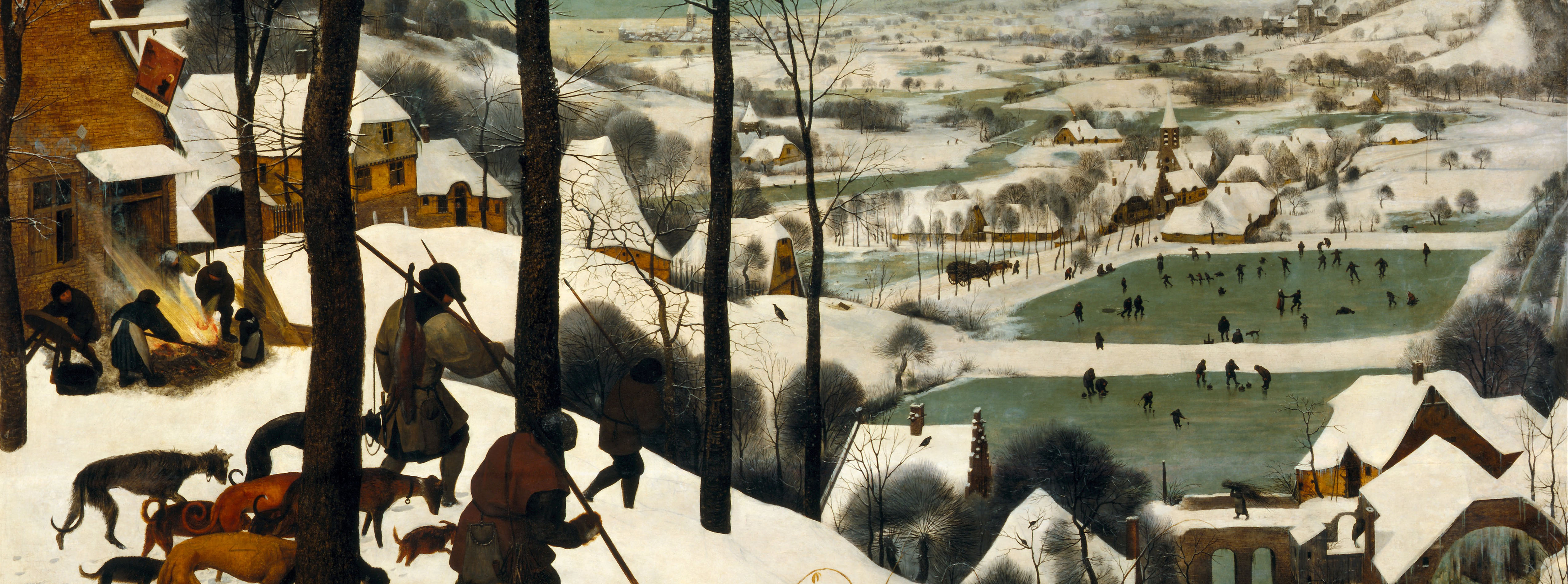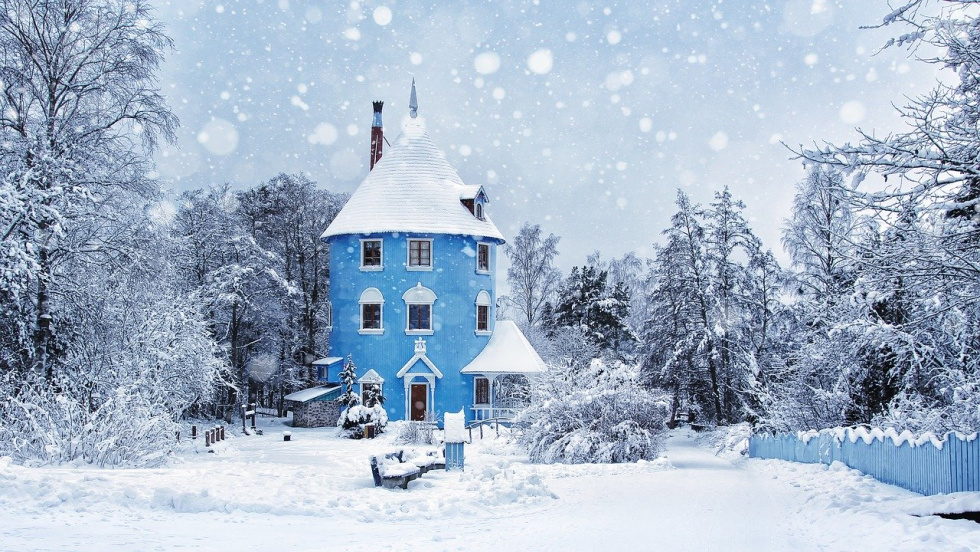
What if we got stuck in an endless February? Aldona Kopkiewicz looks at the sparrows from Hans Christian Andersen’s tale to reflect on transience, human existence in space and time, and the eternal cycles of nature.
The New Year begins on the first day of January, as we know. I must admit, however, that I’ve never wondered before why another time cycle starts on this particular date. It’s yet another year, but we tend to experience it as something radically new. The illusion of a new beginning is good for our mental health. Even though our psychic life consists of arduous and complex processes, this specific day – which encapsulates the drama of beginnings and endings, or welcomes and farewells – can be celebrated intensely, ecstatically and unequivocally. In that regard, New Year’s resembles a birthday.
There exists, however, an obvious reason why we celebrate our birthday on a particular day, whereas 1st January is set arbitrarily, at least for those of us who follow the Julian calendar, since this varies among different world religions. Still, all religions observe New Year’s Day and I think there are no cultures that wouldn’t celebrate the passing of time. In short, we – in most of Europe – follow the calendar according to which New Year’s falls on 1st January thanks to Julius Caesar and Roman politics. This date seemingly makes sense, since it is preceded by the winter solstice and the birth of Jesus. Does it matter that this is a time when nature is fast asleep and my own body also wants to hibernate? While drinking a midnight glass of champagne, I start joyfully anticipating what the new year will bring. Faint hope springs up inside me, entertained by night-time drowsiness and alcohol, which helps me forget and then get excited (because to welcome the new, one first needs to forget). Of course, if I forced myself to be more down-to-earth, I might admit that all this seems a little absurd, but such a rational statement would actually lead us nowhere.
It was thanks to the sparrows from Hans Christian Andersen’s The Story of the Year that I could, with all seriousness, pose this question: why does the New Year begin in the middle of winter?
After all, it’s still long before the spring arrives – the time when life really reawakens. Is there any hidden meaning here? Well, we should trust literature. Andersen’s tale opens with a conversation between disappointed sparrows. It’s now the end of January and a blizzard is still whirling through the streets, even though humans have just bid farewell to the old year: “Yes, just now the humans were running about, shooting in the New Year,” said a little small frost-nipped sparrow; “they smashed pots against the doors and were clean out of their wits with delight at the old year having gone.” I learn from annotations that the idea behind lighting fireworks and throwing pots with ashes against the doors was to scare away trolls and other underground creatures. This explains why even today we tend to celebrate with a bang! It’s true that pets become very stressed by fireworks, but how much fear would we feel if those chthonic monsters were to trouble us for the whole following year!
But the sparrows from the tale are indignant about the fact that people follow the calendar rather than the laws of nature. They decide to go to the countryside, where early signs of spring are more likely to be seen. The winter there, however, turns out to be even more harsh than in the city. The sparrows are eagerly awaiting spring. While watching white, cold fields and the sky, where a sharp wind blows, they suddenly notice an old man, who is sitting on a heap of snow despite the freezing weather. The raven explains to them that this is Winter – “the old man from last year. He’s not dead, as the Almanack says; no, he’s more like a regent for the little Prince Spring, who’s coming. Yes, Winter holds the reins. Ugh!”
What follows is a description of the four seasons, which is so beautiful that I won’t event try to summarize it. I’ll only say that the spring arrives together with two little children: a boy and a girl. At the same time, flowers and birds appear (imagine how satisfied the sparrows are!). The children grow up and get engaged. They kiss, without even noticing the rain, since “[t]he raindrops and the tears of joy were all one.” The earth is getting greener and the heat is increasing, while the girl turns into a mature woman, the wife of Summer, who is now “the strong man.” This is the time of violent storms, when nature becomes even more lush and grows in power. In the autumn, on the other hand, the couple gets weaker, especially “the Queen of the Year,” who grows melancholic: she is missing her childhood, lying on the leaves and watching the stars. When she is gone, the butterfly – “the last of the year” – shows up. The King, left alone, eventually morphs into the old man from the beginning of the story. He also becomes exhausted and when he hears the bells ringing out for Christmas, he hopes for the new season to come. Winter wants to leave.
The old man’s desire to disappear is curbed by the “Angel of Christmas” himself, who says “Still the power is yours … the power and not the rest. Let the snow lie and keep the young seed warm all about you. Learn to endure that homage should be paid to another while yet you are the Prince: learn to be forgotten and yet go on living. The time of your freedom will come when the Spring comes.” Winter agrees and waits to fulfill his duty to become the guardian of Spring. What can we learn from this story then?
We tend to notice the beginning only when a given thing or phenomenon becomes tangible, visible and undeniable. The true beginning comes much earlier, though. Everything that is about to happen at first remains concealed, while someone toils patiently so that it actually happens.
Nobody sees nor praises this person. Others are being celebrated, but it is him or her who is right now shaping the future. He or she is the one who holds power – a positive power, which is not about splendour, but about accepting that we also have some control and need to take responsibility. Interestingly, this is how Andersen conceptualizes the changing of the seasons, which is typically understood as something spontaneous. But even when it comes to nature, someone needs to takes charge of changes. What a timely lesson right now, when the future of nature is in our hands.
Let’s return to human existence, though. Andersen’s tale suggests that if we seek change, we have to find our shadow – the invisible, hidden space that is not fully realized yet. Perhaps it’s something repressed or desired. We need to trust what we hardly intuit, despite the cold and disbelief. Because intuition can come through precisely during such a depressing and empty time, when we lack the power to persevere and want to be gone forever. This is when we should fulfill our duty towards… Right, towards what? Well, simply towards ourselves and our own desire to grow, which is not to say that it’s all about one’s individual psychic life. To be able to fully participate in broadly-understood social change, however, we first need to go through our own metamorphosis and decision-making process.
Although a lot has been written about changes, I’m not familiar with any work that describes such a moment of transition in detail or deeply engages with all the processes leading towards it. This might be why since time immemorial, myths and metamorphoses have relied on the language of poetry and fairy tales, where this transitory moment can be captured through metaphors. In Andersen’s story, for example, the transition between the old man and the two little children is covered with dense mist and takes place inside a cloud. This reminds me of mystical clouds of unknowing, which envelope that which cannot be expressed.
And here comes another important lesson: even if it’s our conscious engagement with the unconscious that paves the way towards change – and even if listening to one’s intuition has little to do with mysticism – let’s be careful when pinpointing causes behind various phenomena or exact beginnings. Their seeming transparency might prove deceptive and arbitrary. The birth of a certain phenomenon, thing, work of art, or person results from the workings of multiple factors and powers, which we have only limited influence on. Nobody can promise that the beautiful spring awaits us, but waiting for nothing – with no faith in the Angel’s message – would be even harder: we would get stuck in an endless February.








